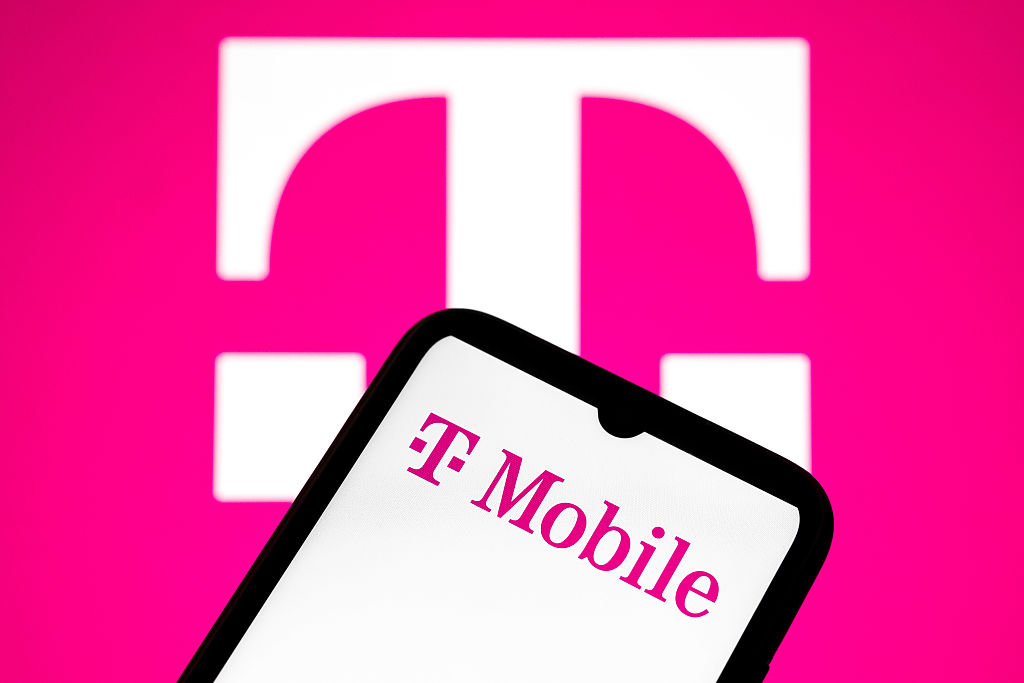Let's Talk About Life Insurance
Here's why it's so important to have a family conversation about life insurance and financial planning. It may be easier than you think.


Have you had a conversation with your family about life insurance?
It might not feel like the most natural discussion to have around your dinner table, yet it’s one of the most important. While the topic can feel a little heavy, it doesn’t have to be. Talking about life insurance and the steps you’re taking to protect your family can be reassuring and empowering to everyone in your family.
September is Life Insurance Awareness Month, an ideal time for families to start or continue conversations about money management, financial planning and life insurance. Some of the latest research helps us understand why it's critical to have these conversations in the first place.
From just $107.88 $24.99 for Kiplinger Personal Finance
Become a smarter, better informed investor. Subscribe from just $107.88 $24.99, plus get up to 4 Special Issues

Sign up for Kiplinger’s Free Newsletters
Profit and prosper with the best of expert advice on investing, taxes, retirement, personal finance and more - straight to your e-mail.
Profit and prosper with the best of expert advice - straight to your e-mail.
In fact, in January 2024, 51% of consumers reported owning life insurance, which is down significantly from 63% in 2011, according to LIMRA’s annual Insurance Barometer Study. In addition, 22% of people who own life insurance say they do not have enough coverage.
Another study, commissioned by Prudential, showed that while people with higher household incomes are more likely to have life insurance than those with lower incomes, 15% of those with household incomes of $100,000 or more do not have any life insurance coverage.
The main reason to have life insurance is because you want your loved ones to receive money after you die to help them financially. But there are many other reasons, too. Let’s start by understanding the opportunities to include life insurance as part of your overall financial plans.
Opportunity #1: Life insurance is more affordable than you think.
The LIMRA study showed about 3 of 4 Americans overestimate the true cost of a basic term life insurance policy.
The cost of life insurance for a healthy 30-year-old male is around $158 per year for a term policy. Term life insurance is a cost-effective way to have the death benefit protection you need for a period of time and can be a perfect starting point.
The truth is you can get more from your life insurance policy than what you pay for it. The value in these types of policies goes beyond what your heirs receive when you die. In addition to the death benefit, permanent life insurance can have the ability to grow cash value, an optional chronic illness benefit and more.
Opportunity #2: It’s simple to buy life insurance.
Today’s life insurance applications are digital and easy to fill out on your own, or with the help of your financial professional. The underwriting interview is typically simple and quick. Many times, a link to the interview can be sent to you when your application is received. You can complete the interview at your own pace on a laptop, tablet or smartphone.
And if you’re healthy, detailed medical questions or screenings may not be necessary. If additional medical information is needed, it can often be obtained electronically. If you’ve ever been turned down for life insurance for a health condition, it’s worth trying again, as more people are insurable than ever before.
Opportunity #3: You can access some life insurance benefits while you’re still alive.
You can buy policies that have potential to grow tax-deferred cash value, and you may be able to take tax-free loans and withdrawals* and use the money any way you choose. You could pay for things like a wedding, a down payment on a home or supplement your retirement income using cash value in the policy.
There are times when you might choose to use cash value from a life insurance policy as income. The advantage is that you will generally pay no income taxes or penalties on what you withdraw, there are no age requirements, and there are no required minimum distributions (RMDs). You can also use the death benefit for yourself if you’re chronically or terminally ill.
Opportunity #4: Life insurance offers financial protection for your loved ones.
Life insurance can help maintain your family’s lifestyle and dreams. If you were to die unexpectedly, the livelihood of your family could be at risk. There are expenses related to housing, food, clothing, college, etc., that will not die with you.
Life insurance can also help reduce estate taxes for you and your beneficiaries. Your estate tax burden may not seem problematic today, but if your assets are positioned well, they will grow, and your future estate could be affected by tax laws.
Another important factor to consider: Life insurance can be a great way to protect and potentially enhance your legacy. It can give your surviving spouse or other dependents income when you’re gone. When you die, your surviving spouse or other dependents will likely still need income, and a generally tax-free death benefit** could provide that.
Expanding the conversation
I’d encourage you to use your conversations about life insurance as a springboard to talk to your family about the broader topic of financial planning, as well.
Here are a few steps to consider when starting these conversations with family members at any age:
Make it personal. Ask your family members what they think about saving for a big purchase or how they feel about money and spending. If you have a family vacation or event coming up, consider using that as the focus. Encourage open-ended questions that prompt thoughtful discussions.
You might also share your own experiences with money, including mistakes and successes. How did you learn about the importance of saving? This can help demystify financial topics and show that it’s OK to talk about money openly.
Keep it fun. There’s no reason you can’t have a little fun during these conversations. You can use games, apps and books to make learning about finances enjoyable and engaging. For example, some online platforms like SplashLearn offer interactive money games, and financial literacy apps can be helpful.
Stick with it. Money doesn’t need to be a taboo topic. By starting these conversations early and continuing them throughout life, you can ensure that every family member is informed, prepared and confident about their financial decisions.
When your family members understand what it takes to manage money, they can make more informed decisions. These decisions span everything from what to buy or not to buy all the way through whether they’re financially ready to retire. One of the gifts you can give them is the confidence to make these decisions.
I hope Life Insurance Awareness Month encourages you to break the silence and make talking about life insurance, and finances, a normal part of our family members’ lives. They’ll be better off as a result.
* Outstanding loans and withdrawals will reduce policy cash values and the death benefit and may have tax consequences.
** IRC $101(1)(a) for death benefit proceeds typically received income tax free and IRC $101(g).
Related Content
- How Much Life Insurance Do You Really Need?
- Four Common Misconceptions About Life Insurance
- Retirees, It's Not Too Late to Buy Life Insurance
- Should You Buy Life Insurance? Four Cases When You Should or Shouldn't
- When Is the Perfect Time to Buy Life Insurance?
Profit and prosper with the best of Kiplinger's advice on investing, taxes, retirement, personal finance and much more. Delivered daily. Enter your email in the box and click Sign Me Up.

Kevin Brayton is the head of Business Growth & Market Expansion for Prudential Individual Life Insurance. Kevin is responsible for the overall strategic vision for the company’s distribution, sales and business development efforts. In this role, he is accountable for the firm’s distribution model, maximizing sales by expanding reach and creating synergies across channels.
-
 Are T-Mobile's Prepaid Perks a Home Run or a Strikeout?
Are T-Mobile's Prepaid Perks a Home Run or a Strikeout?T-Mobile's prepaid lineup promises MLB.TV, T-Mobile Tuesdays and hotspot data. But do the perks make it worth switching?
-
 Verizon Home Internet Is Offering Free Tech to New Customers
Verizon Home Internet Is Offering Free Tech to New CustomersVerizon’s latest home-internet promotion includes free tech, but the real savings depend on pricing, speed needs and how long you stay.
-
 Retirees in These 7 States Could Pay Less Property Taxes Next Year
Retirees in These 7 States Could Pay Less Property Taxes Next YearState Taxes Retirement property tax bills could be up to 65% cheaper for some older adults in 2026. Do you qualify?
-
 The November CPI Report Is Out. Here's What It Means for Rising Prices
The November CPI Report Is Out. Here's What It Means for Rising PricesThe November CPI report came in lighter than expected, but the delayed data give an incomplete picture of inflation, say economists.
-
 Online Banks Still Lead on Rates, But Is Switching Worth it Now?
Online Banks Still Lead on Rates, But Is Switching Worth it Now?As interest rates trend down, online banks keep an edge on yields, but service, access and flexibility still matter. Here’s how the trade-offs stack up.
-
 I'm 73, Retired, and Dreading Winter, But I Can't Afford to Be a Snowbird. Help!
I'm 73, Retired, and Dreading Winter, But I Can't Afford to Be a Snowbird. Help!How can a snowbird wannabe warm up without the expense? We asked professional wealth planners for advice.
-
 5 Smart Things to Do With Your Year-End Bonus, From a Financial Professional
5 Smart Things to Do With Your Year-End Bonus, From a Financial ProfessionalAfter you indulge your urge to splurge on a treat, consider doing adult things with the extra cash, like paying down debt, but also setting up a "fun fund."
-
 Are You a Gen X Investor? Here's How You Can Protect Your Portfolio From an AI Bubble
Are You a Gen X Investor? Here's How You Can Protect Your Portfolio From an AI BubbleAmid talk of an AI bubble, what's the best course of action for investors in their 50s and 60s, whose retirement savings are at risk from major market declines?
-
 Hey, Retirees: Put Your Charitable Gifts in a Donor-Advised Fund (and Enjoy Your Tax Break)
Hey, Retirees: Put Your Charitable Gifts in a Donor-Advised Fund (and Enjoy Your Tax Break)A donor-advised fund is a simple (really!), tax-smart strategy that lets you contribute a large, tax-deductible gift now and then distribute grants over time.
-
 Nasdaq Sinks 418 Points as Tech Chills: Stock Market Today
Nasdaq Sinks 418 Points as Tech Chills: Stock Market TodayInvestors, traders and speculators are growing cooler to the AI revolution as winter approaches.
-
 23 Last-Minute Gifts That Still Arrive Before Christmas
23 Last-Minute Gifts That Still Arrive Before ChristmasScrambling to cross those last few names off your list? Here are 23 last-minute gifts that you can still get in time for Christmas.